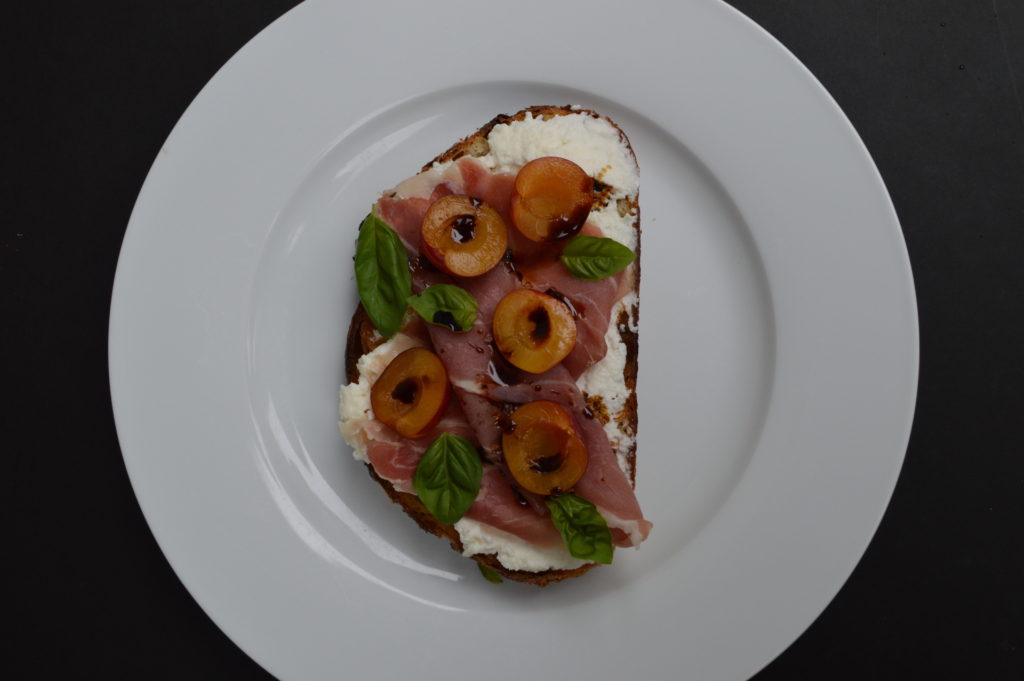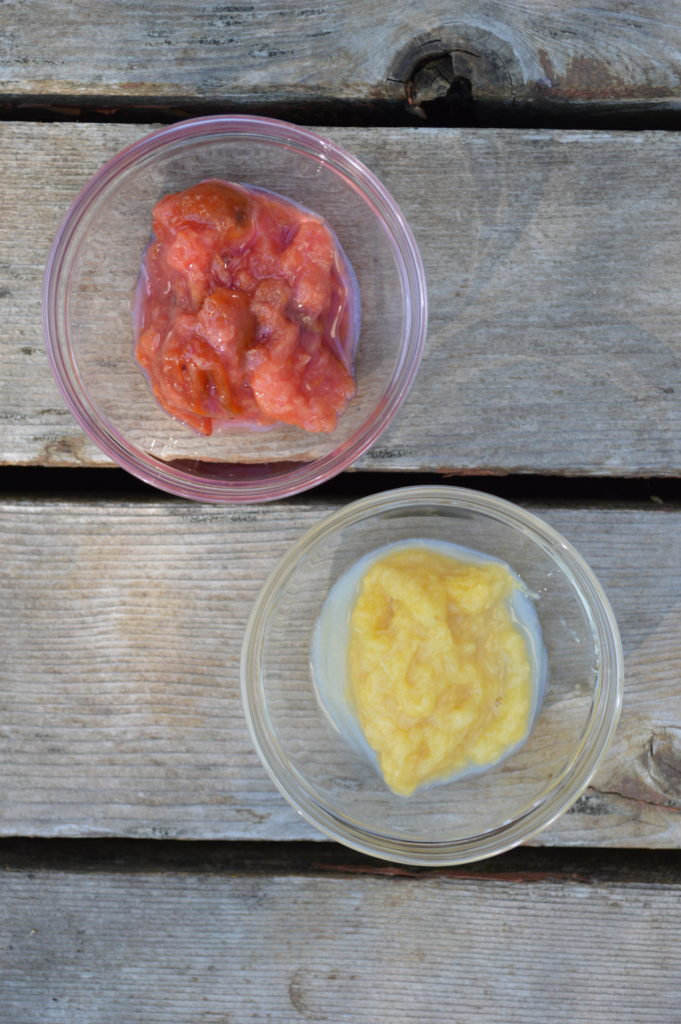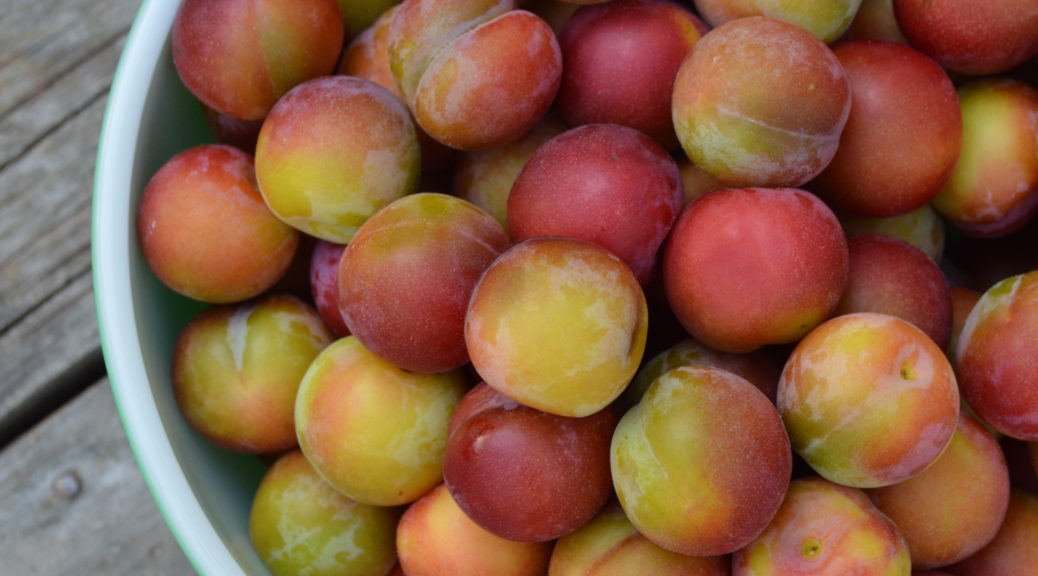
Last summer I posted about our Japanese plum trees, and how we had harvested a few plums from each tree the last two summers.
This year we got our first appreciable harvest, so I have finally been able to play around with how best to store, cook, and preserve the fruit. There is almost no useful English-language information online regarding Japanese plums in the kitchen, and we’ve had some pretty surprising results, so I thought I would share!
The following information is all about our Ptitsin #3 cultivar. We are still waiting for the Ivanovka to ripen, but expect similar results.
Harvesting. Plums are able to ripen off the tree. When the Ptitsin plums are almost fully ripe, their skin is partly yellow and partly red, and their stem connection becomes extremely fragile. They get to a point where simply touching the fruit will release them from the tree. After harvesting leave the plums on the kitchen counter for a couple days and they turn fully red and super aromatic.
Pitting. Ptitsin and Ivanovka are both “semi-free stone” plums. The stones have weak connections to the flesh at the top and bottom. If you halve the plum along the crease, the stone is (usually) quite easy to lift out with the tip of a paring knife. Cherry pitters are also very effective at removing the stones, if you have one large enough to fit the plums inside the jaws.
Tasting Notes out of Hand. Japanese plums have an amazing perfume that reminds me of peaches. When properly ripe the flesh has a grape-like texture: soft and juicy, with a very mild acidity. The skin however is quite tart and astringent. When you eat them all together the result is a very well-balanced piece of fruit.
We’re still finding ways to use them fresh in the kitchen, but the best dish we’ve made so far is plums with prosciutto, ricotta, balsamic, and basil. I think any dish you might use other fresh stone fruit or melon is likely going to work with Japanese plums, too.

Okay, great! So we know that these plums are delicious out of hand. Now let’s cook with them.
Cooking. I dropped some halved, pitted plums in a pot and sprinkled sugar over them. Then I turned the heat to medium high and covered the pot until the plums had broken down a touch and were swimming in their own thickened juices.
First observation: Japanese plums have “melting” flesh, which means they break down completely when cooked. That’s fine. Actually it’s great for jam, which we’ll be trying shortly.
The pigment from the skins bleeds into the cooked mixture making a beautiful sunset colour, a vibrant combination of red, yellow, and pink.
I tasted the briefly cooked plums, and damned if they weren’t ridiculously sour. I almost couldn’t believe it. It was like I was eating a different fruit than the juicy, mild, fresh plums I had put in the pot.
I wondered if cooking the plums in contact with their skins made the entire mixture tart and tannic. To test this hypothesis I peeled some plums, then cooked only the yellow flesh, without any skins. Sure enough, as soon as they were heated and melted, the mixture was again super sour. I’ll defer to a food scientist why this might be, but the fact is that Japanese plums become sour when cooked.
As an aside, when the fruit is cooked without the skins the resulting mixture is a friendly yellow, reminiscent of passionfruit.

The really crazy thing is that we have found that almost any method of processing – stewing, jamming, canning, freezing, drying – results in the same development of intense sour flavours. Don’t get me wrong: Japanese plums are great cooked, and will definitely make good jam and pie and preserves and such. It’s just crazy to me that you can take a Japanese plum, freeze it, and thaw it, and it tastes completely different than it did at the start. I can’t think of another ingredient I’ve worked with that does that.
Anyways. I’ll write more about each specific processing method in turn. Stay tuned for many more plum experiments, including making prunes and lacto-fermenting!
